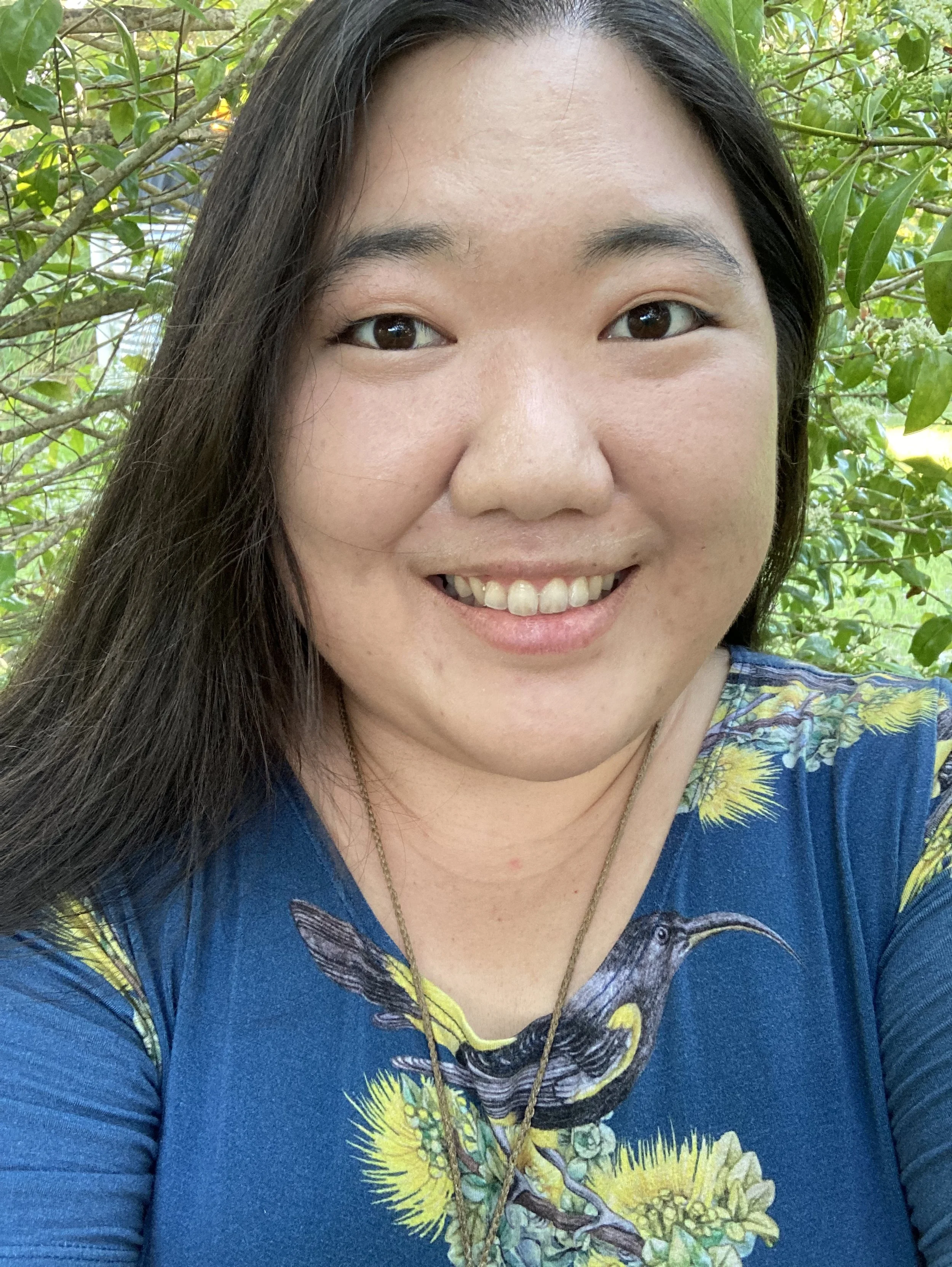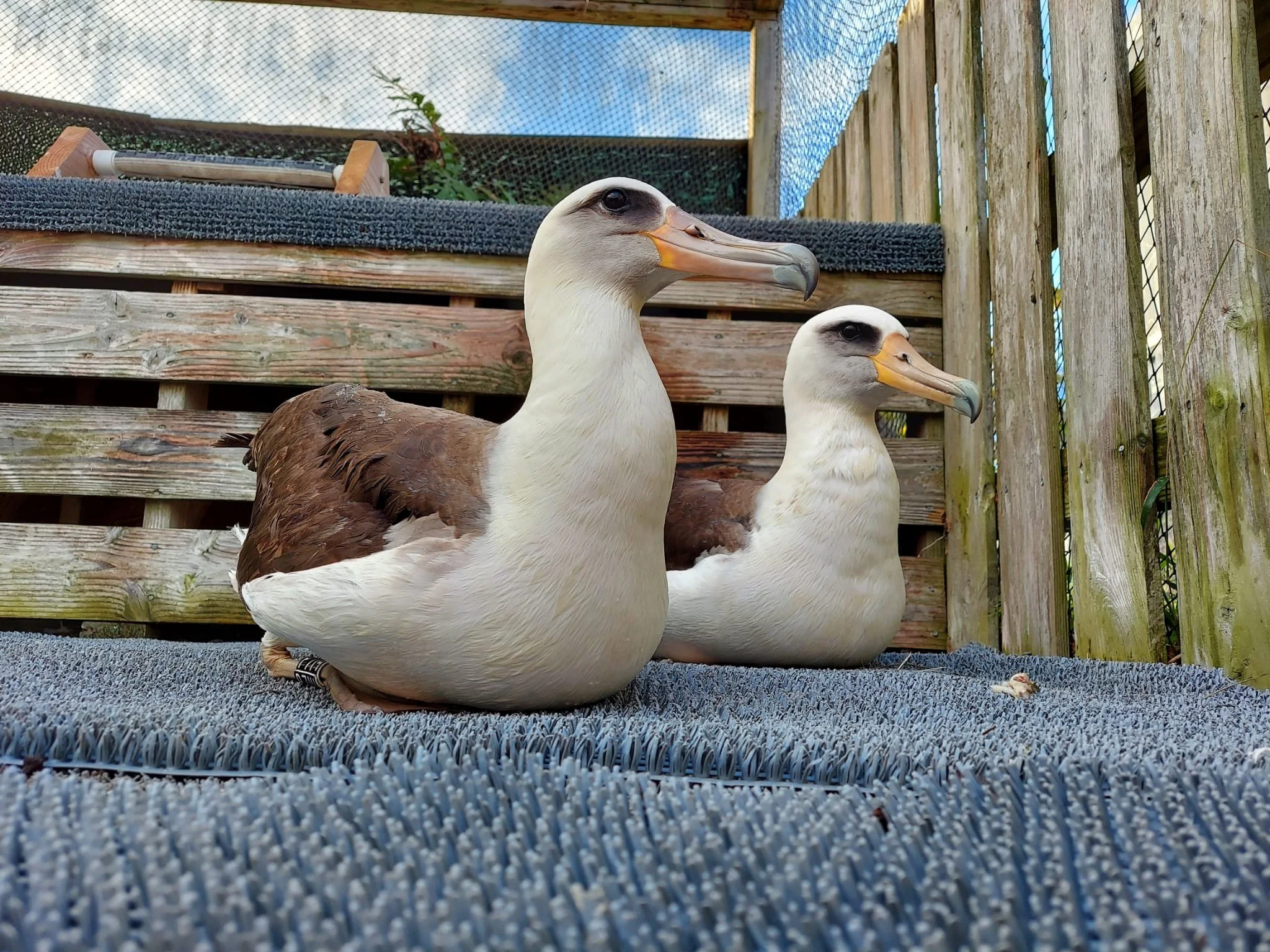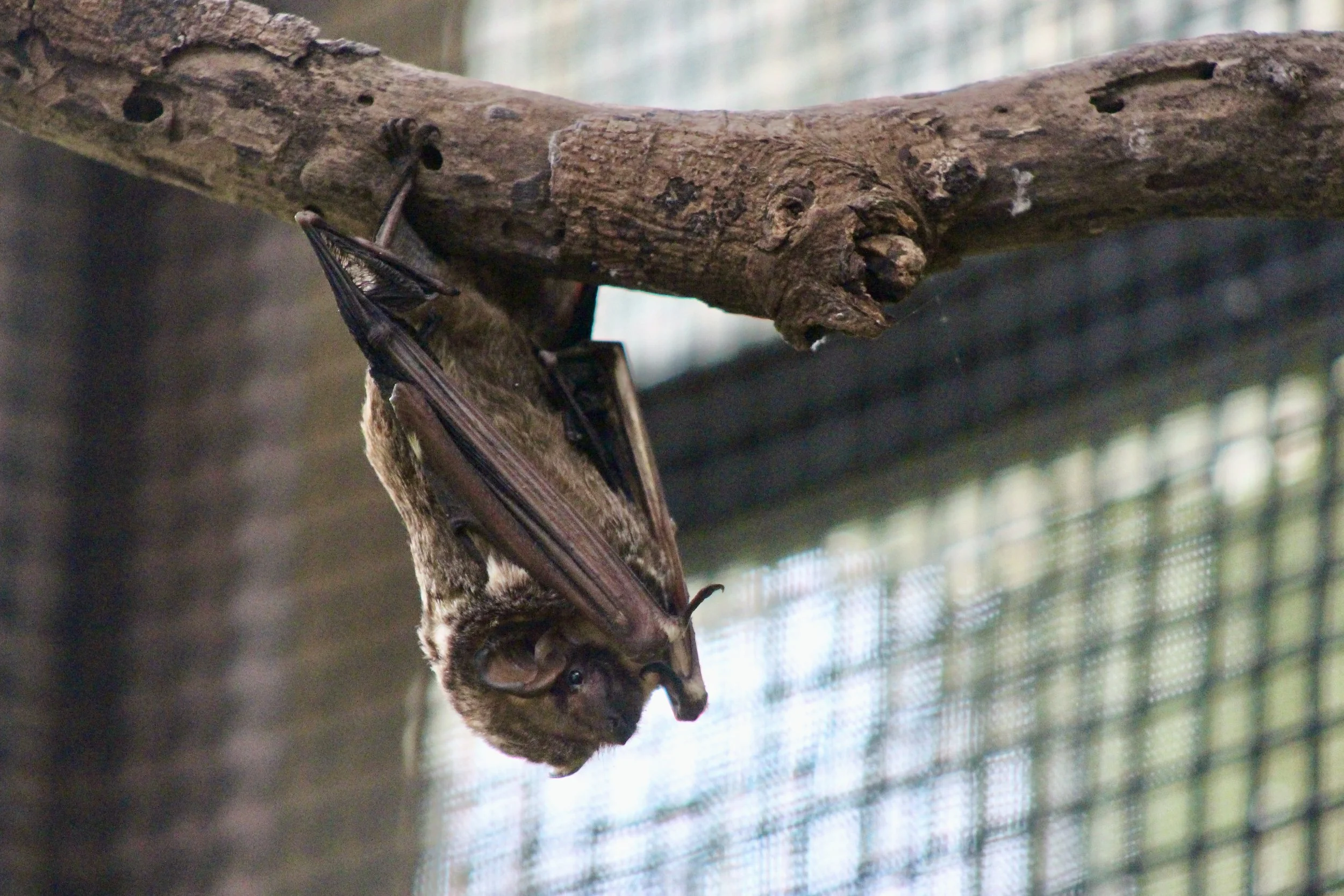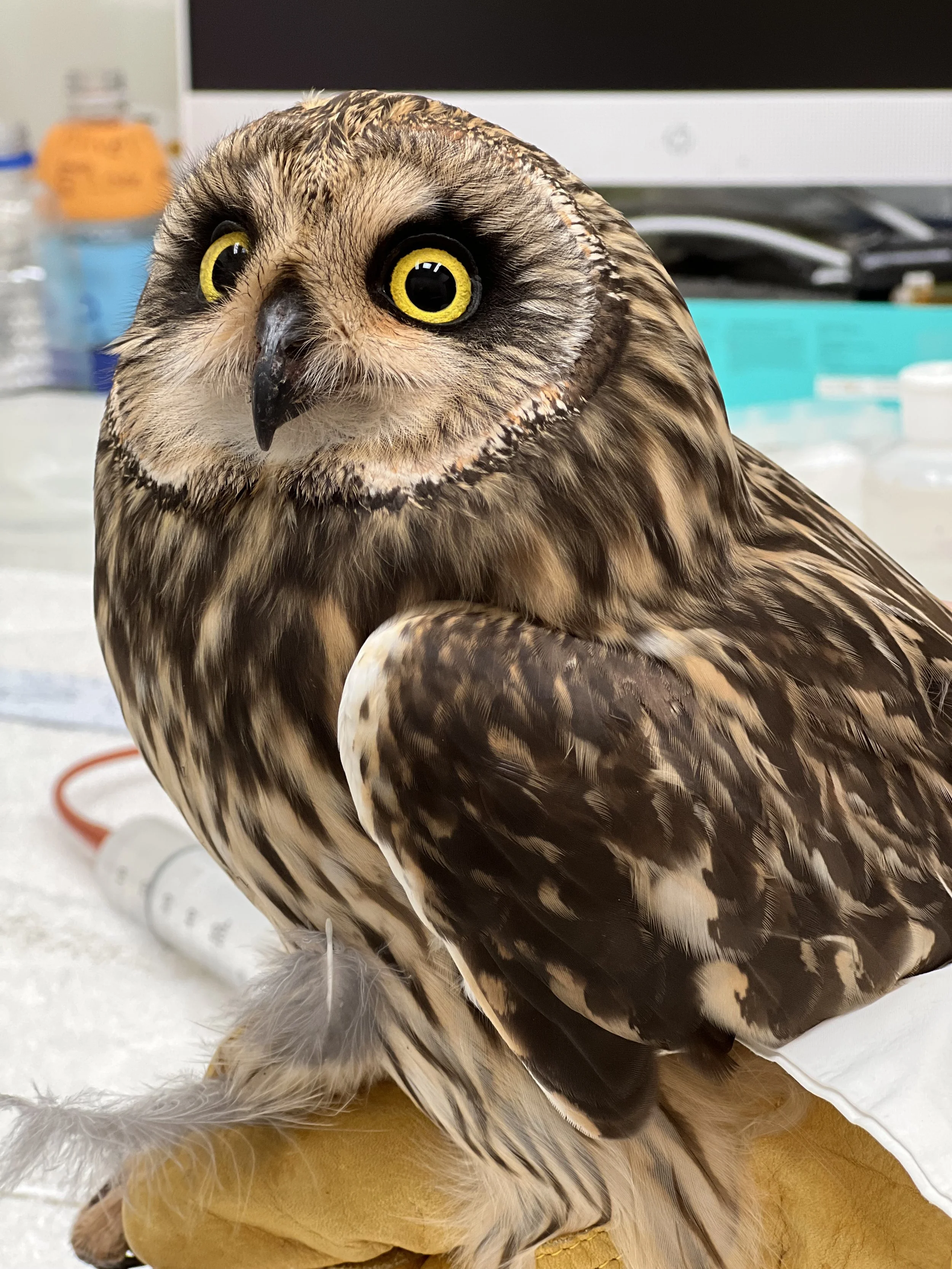What’s So Funny About Rehab? Saving Hawaiian Wildlife, Bird by Bird
By Hob Osterlund, Safina Center Senior Fellow
Manu o Kū, or white tern, youngster. ©Hawaiʻi Wildlife Center
Rae Okawa is the kind of person employers dream about. Sheʻs a multi-tasker like youʻve never seen, and she has layers of skills to boot. She knows science, technology, social media, graphic arts and fundraising. Sheʻs got a personality that wonʻt quit. Plus sheʻs funny. The best news? All that talent is laser-focused on the native birds of Hawaiʻi. Hereʻs my e-conversation with Rae in her office as the Development Coordinator at the Hawaiʻi Wildlife Center.
Rae Okawa, Development Coordinator at the Hawaiʻi Wildlife Center. ©Hawaiʻi Wildlife Center
HO: Aloha Rae Okawa, and kudos to you, Linda Elliott and your whole team for more than ten years of caring for injured native birds—not to mention bats—at the Hawaiʻi Wildlife Center. That is no mean feat. How many patients have you admitted in that time, and to what do you owe your success?
RO: Mahalo Hob! We have had over 2,600 patients in that time. We have recently averaged about 800 patients a year, which is a huge increase from the 23 patients we treated in 2012. Much of our success comes from knowing that it’s impossible to accomplish this alone. We’ve been building our partnerships throughout the state, and of course we also owe our successes to all of our donors and grantors. Initially HWC was met with skepticism about whether this kind of statewide native wildlife hospital and rehabilitation center was necessary. Back then it was a pretty new concept for Hawai‘i.
HO: I know there are dozens of native bird species you can treat. One patient recently stuck out for me, a Laysan albatross from Oʻahu you called P714. She (I am randomly assigning a gender here) got hit by a golf ball and got admitted with head trauma. Please describe what happened under your care and how you knew she was ready to be released to the wild.
P714 and her rehab buddy. ©Hawaiʻi Wildlife Center
RO: She had dried blood along her nares and had a difficult time balancing. When staff walked her down the hospital hallway, she bumped the wall. Once we were confident she could navigate the aviary without any issues, she was introduced to the outside and given plenty of rest time and eventually pool time. We had another Mōlī in care so she made a rehab buddy. Her health and behavior continued to be monitored, as were her feathers and waterproofing. When she met all of our release criteria she was shuttled out to sea by our friends at Kohala Divers and released. It was spectacular to watch.
HO: You do an amazing job with social media so the public can follow individual birds at HWC. On your personal journey, you mentioned non-native zebra doves as your gateway bird. Tell us more about how your interest morphed into native birds, and how you prepared for this work.
RO: I was born and raised on O’ahu, where Zebra doves are everywhere. I loved watching them chase each other doing their “sexy dance” trying to attract a mate, only to be distracted by food. But when I realized most the birds I saw were imports, I got interested in conservation of native birds. When I was in high school I told my grandma I wished I could just go to school to study birds. She told me ornithology was a thing, and I was sold. I got into Cornell and eventually did fieldwork on a ranch in Venezuela. Later I got my Masters in Environmental Studies from the University of Pennsylvania. It was during a project for my nonprofit fundraising course that I met Linda Elliiot, the founder of the Hawai‘i Wildlife Center. The course required us to write a fundraising plan. I cold-called Linda, who was completing the construction of the HWC hospital at the time. I found out later that I had called on the very day she was meeting with her board to get a fundraising plan together. That was in January 2011. I wrote the plan, stayed on as a volunteer, and was hired full-time as Development Coordinator when I graduated.
HO: You often use humor in your posts. Tell us about the choice to be funny, and how we might encourage more of the same in the super-serious world of conservation.
RO: It’s so easy to get caught up in the seriousness of conservation because of the very critical, time-sensitive issues. My personal approach is to utilize humor as a tool to help conservation messages take a deeper hold. You get fatalistic when all you hear is doom and gloom. We've even had people ask why we even bother when everything is extinct? DUDE. We still have over seventy different species and subspecies of native birds left. Yes, it’s way less than we used to have, but let's not totally give up yet, ok? I want to celebrate and love what we have. The last thing I want is for people to automatically associate native species stories with bad news. Seriousness in itself is often warranted; however, with stories and posts that embrace lightness and joy, we get people to feel how special these species are. I am happy to serve as a provider of that joy through the Hawaiʻi Wildlife Center. Shameless plug: please follow HWC on Facebook, Instagram, Twitter and TikTok!
HO: Are there any among our native species that hold a special place in your heart? Your photos of the white tern chicks (Manu o Kū) are knees-weak adorable.
RO: Am I allowed to say all of them? Yes, the Manu o Kū chicks are just too cute! With the understanding that pretty much all native species are special to me, I think the ʻŌpeʻapeʻa (Hawaiian hoary bat) deserves an extra mention. They sometimes get a bad rap. They’re tiny, they're fluffy, they have huge ears, they can hang by their toes, they eat bugs. What’s not to love? And also, whenever I see bat stories in the news, too many of them use the scariest photos of teeth-baring, angry-looking bats. To all the media folks looking to do an ʻŌpeʻapeʻa story, please contact us at Hawai‘i Wildlife Center and I’ll be happy to share photos that are not so scary for your story! Relaxed bats are pretty cute. They just like to hang. I can relate.
ʻŌpeʻapeʻa, or Hawaiian hoary bat, hanging out. ©Hawaiʻi Wildlife Center
HO: What are the primary causes of injury to the Pueo (Hawaiian short-eared owl) and what are the special considerations for their care?
RO: We receive a lot of Pueo that have been hit by cars. Pueo fly low in search of food and rodents on roadways are easy to spot. Once they catch a meal, they can get totally focused on what they’re eating. Pueo are also widely affected by rodenticide poisoning. Poisoned rodents are slow and easy to catch, which causes a build-up of toxins in the owl’s system. Sick Pueo are more likely to be hit by a car or caught by a predator like a dog, cat or mongoose. All the owls weʻve tested have had traces of rodenticides in their system. Pueo can also get snagged in barbed wire fencing. If you come across a Pueo stuck in barbed wire, we recommend cutting the segment of the wire that the bird is tangled on (rather than trying to untangle it from the fence) and bringing the bird to a permitted rehabilitation facility. At our hospital we can anesthetize the bird and remove the wire. Trying to untangle the bird from the fence could be dangerous for the rescuer and cause additional injury to the bird.
Pueo, or Hawaiian short-eared owl, in recovery. ©Hawaiʻi Wildlife Center
HO: How can we best help assist HWC in its good work?
RO: If you are able to donate, that is always a HUGE help. We currently do not receive any consistent government funding and a majority of our income comes from individual donations and grants. We also have wish list of items on our website. We are on Amazon Smile too. If you’d prefer to assist in another way, we have many volunteer opportunities available statewide, especially with patient transport (think: bird uber). Our Wheels for Wildlife volunteers drive patients to and from our partners, our facility, and the airport. If you are a pilot with your own plane, we also have a Wings for Wildlife air transport counterpart program to our Wheels for Wildlife program. Finally, helping spread the word always helps a ton. You can sign up for our email ‘ohana on our website. Help us keep up the optimism and continue to promote enthusiasm, enjoyment, and love of our native winged wildlife!





